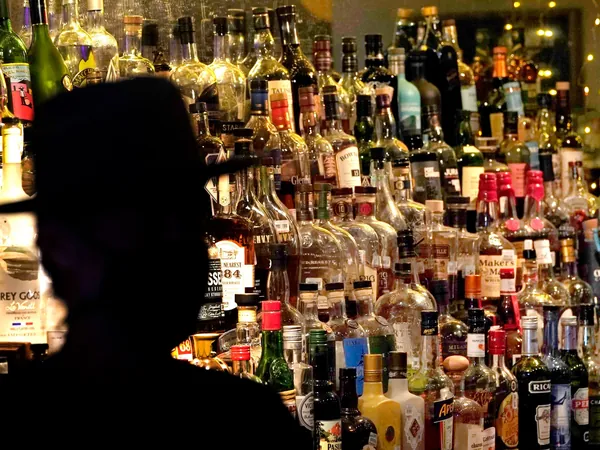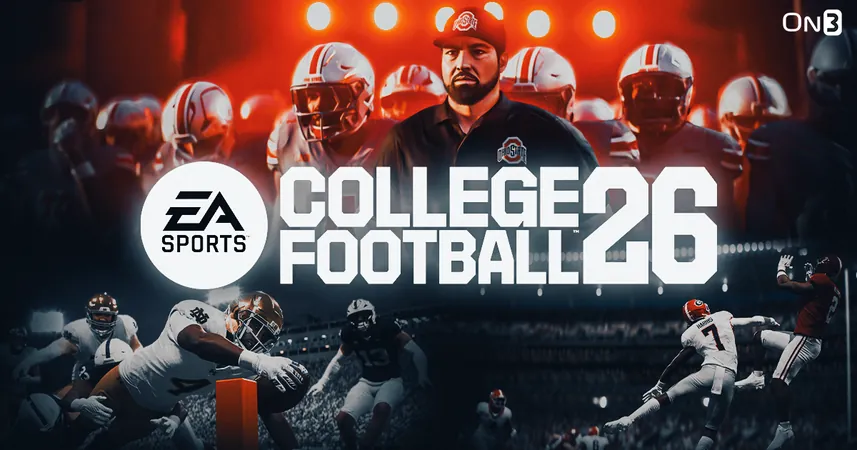
US Surgeon General Calls for Cancer Warnings on Alcohol: The Start of a New Health Revolution?
2025-01-06
Author: Ken Lee
In a bold move that could reshape public perception and consumption of alcohol in America, U.S. Surgeon General Dr. Vivek Murthy has proposed mandatory cancer warning labels on alcoholic beverages.
Why Now? The Outdated Warning Labels
The current warning labels on alcoholic beverages, which date back to 1988, only inform consumers about risks related to pregnancy and impaired driving, entirely overlooking the cancer risks associated with alcohol. This inadequacy, Dr. Murthy argues, is particularly concerning given the substantial research linking alcohol to multiple cancers. In his recent statement on social media platform X, he emphasized, “For individuals, be aware that cancer risk increases as you drink more alcohol. As you consider whether or how much to drink, keep in mind that less is better when it comes to cancer risk.”
The Cancer Toll of Alcohol Consumption
Statistics cited by Murthy reveal a staggering reality: alcohol consumption contributes to approximately 100,000 cancer cases and 20,000 related deaths annually in the United States, making it the third leading preventable cause of cancer after tobacco use and obesity. International studies echo these findings; for instance, the World Health Organization noted that in Europe alone, alcohol was linked to 180,000 cancer cases in 2018, accounting for 4.2% of all cancer manifestations.
How Much is Too Much? Understanding the Risks
The Surgeon General’s report makes it clear that no amount of alcohol consumption is "safe" concerning cancer risk. Even modest drinking doubles the risk of developing certain types of cancer. For example, consuming two drinks daily could lead to a lifetime cancer risk increase for about five out of 100 women and three out of 100 men. Such findings challenge the notion that moderate drinking can be of health benefit, a myth now largely debunked by new research.
Could Warning Labels Make a Difference?
One of the pressing questions is whether updated warning labels will effectively curb alcohol consumption. Similar initiatives for tobacco have shown promise, but the effectiveness of text-based warnings is under scrutiny. Experts contend that while warning labels play a crucial role in transparency, they alone might not be enough to instigate behavioral change.
The Broader Picture: A Movement for Change
Dr. Carina Ferreira-Borges from the WHO highlights that alcohol health warning labels are not just about individual behavior; they serve as systemic tools that create awareness, support broader policies, and diminish the appeal of alcohol marketing. To complement warning labels, experts suggest implementing stricter regulations such as increasing excise taxes on alcohol – a measure that the U.S. Congress has historically resisted. Notably, nations like Sweden and Thailand have successfully reduced alcohol consumption through tax hikes and tighter marketing restrictions.
Breaking Through the Myths of 'Moderate Drinking'
While some studies once suggested moderate drinking could be beneficial for heart health—a view popularly labeled the "French Paradox"—recent reviews emphasize that the risks associated with alcohol consumption often outweigh any potential advantages. In fact, a 2022 JAMA review scrutinized previous studies and found significant flaws in methodologies, shifting the narrative toward the understanding that less alcohol consumption equals improved health outcomes.
The alcohol industry, however, remains on the defensive.
Amanda Berger from the Distilled Spirits Council argues that moderation can have health benefits, asserting that any regulatory changes should reflect a comprehensive review of scientific evidence.
The Road Ahead: Legislative Challenges and Consumer Awareness
Despite the compelling evidence and the Surgeon General's advisory, updating warning labels is not an immediate prospect in Congress. The powerful alcohol industry, which spends millions lobbying against changes, poses significant roadblocks. Additionally, public perception is evolving; interest in non-alcoholic drinks is growing among younger Americans, evidenced by a drop in reported drinking among 18-25 year-olds from 59.6% in 2013 to 49.6% in 2023.
As we stand on the cusp of a potential health revolution, one thing is clear: the call for transparent and informed decisions regarding alcohol consumption is gaining momentum. Could this be the beginning of a healthier future? Time will tell as debates unfold and as we grapple with the truths about alcohol and its risks.



 Brasil (PT)
Brasil (PT)
 Canada (EN)
Canada (EN)
 Chile (ES)
Chile (ES)
 Česko (CS)
Česko (CS)
 대한민국 (KO)
대한민국 (KO)
 España (ES)
España (ES)
 France (FR)
France (FR)
 Hong Kong (EN)
Hong Kong (EN)
 Italia (IT)
Italia (IT)
 日本 (JA)
日本 (JA)
 Magyarország (HU)
Magyarország (HU)
 Norge (NO)
Norge (NO)
 Polska (PL)
Polska (PL)
 Schweiz (DE)
Schweiz (DE)
 Singapore (EN)
Singapore (EN)
 Sverige (SV)
Sverige (SV)
 Suomi (FI)
Suomi (FI)
 Türkiye (TR)
Türkiye (TR)
 الإمارات العربية المتحدة (AR)
الإمارات العربية المتحدة (AR)